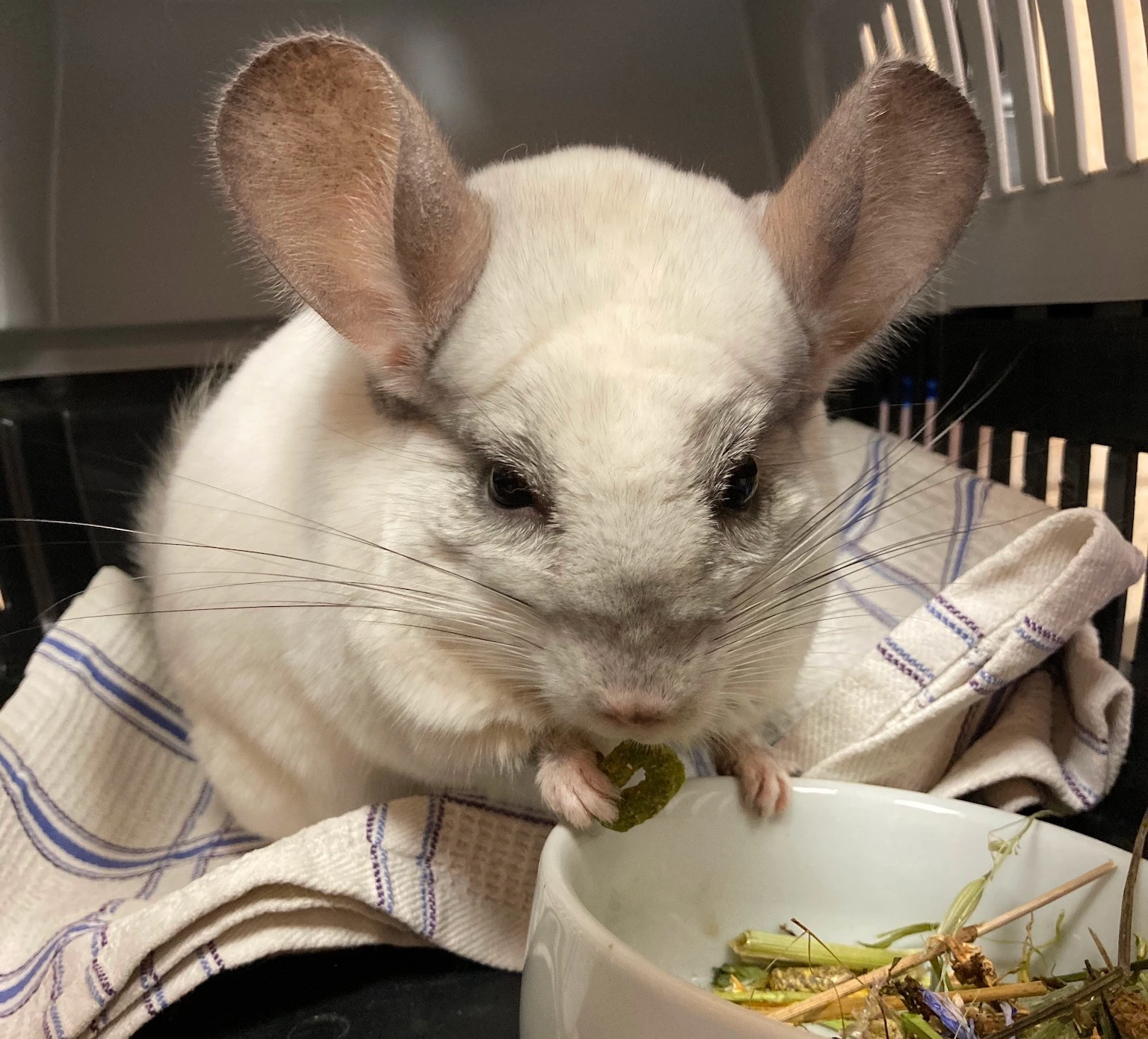Diabetes in chinchillas: diagnosis, diet, and prevention of complications
Diabetes in chinchillas is a significant health issue that I want to address to increase the awareness of the owners. Untreated diabetes can lead to severe complications, such as vision loss, frequent infections, or liver diseases. Therefore, it is essential to remember about regular health checks, that allow to detect the disease at an early stage.
Diagnosis
The diagnostic process primarily includes blood tests where fructosamine and glucose levels are examined. Fructosamine is a protein that binds with glucose in the blood, and its level can help assess glycemic control over the last few weeks. Meanwhile, glucose measurement allows for a direct evaluation of the current blood sugar level.

In addition to blood tests, the veterinarian might also order a urine glucose test to detect possible glycosuria, which is the presence of glucose in the urine, a potential sign of diabetes.
If you notice symptoms in your chinchilla that may suggest diabetes, such as excessive thirst and frequent urination, do not hesitate to visit a veterinarian to undergo diagnostic tests. One of the symptoms is also cataract (visible in the picture above). However, quite often, there are no symptoms, which is why it is worth performing preventive examinations once a year.
Remember that early detection of the disease and the implementation of appropriate treatment increases the chances of therapy success and helps to avoid severe complications.
Diet
One of the factors causing the development of diabetes in chinchillas is an improper diet. You should avoid foods containing sugars, a large amount of fat, and artificial colorants. Chinchillas should not be given fruits, nuts, cereal grains, sweetened corn cobs, or drops. Such snacks can not only lead to diabetes but also to other health problems. It is therefore important to ensure a balanced and varied diet rich in protein, fiber, and unsaturated fatty acids.

Primarily feed your chinchillas dried herbs (including dandelion, plantain lanceolata, broadleaf plantain, echinacea, nettle, alfalfa, oat herb, parsley, cornflower, raspberry leaf, chicory herb), twigs, flower petals (such as black mallow, calendula, cornflower, rose, yarrow) and treats like nettle root, chicory root, dandelion root, willow bark, or milk thistle. Hay is also essential, available all day long and forming the diet's foundation. Ready commercial granules are not necessary in feeding, and if you decide to use them, let them be a small addition to the diet.
Also remember that chinchillas need a lot of movement, so provide various attractions in the cage (e.g., a running disk and shelves) and run areas outside the cage. Besides, overweight contributes to diabetes, so control your pets' body mass and do not overfeed them with treats (i.e., roots and flower petals).
In case your pet is diagnosed with diabetes, the veterinarian will establish an individual treatment plan, which may involve dietary changes, administering drugs to reduce blood sugar levels, and monitoring glucose and fructosamine levels. Regular check-up visits and following the veterinarian's recommendations are key to maintaining good health in chinchillas with diabetes.
In conclusion, caring for the health of chinchillas involves not only regular visits to the veterinarian and monitoring glucose levels but also a proper diet and physical activity. Thanks to appropriate care, we can prevent serious complications related to diabetes and enjoy a long, healthy life with our pets. As a veterinarian, I encourage regular monitoring of your chinchillas' health and consultations with professionals if you have any doubts regarding their health.